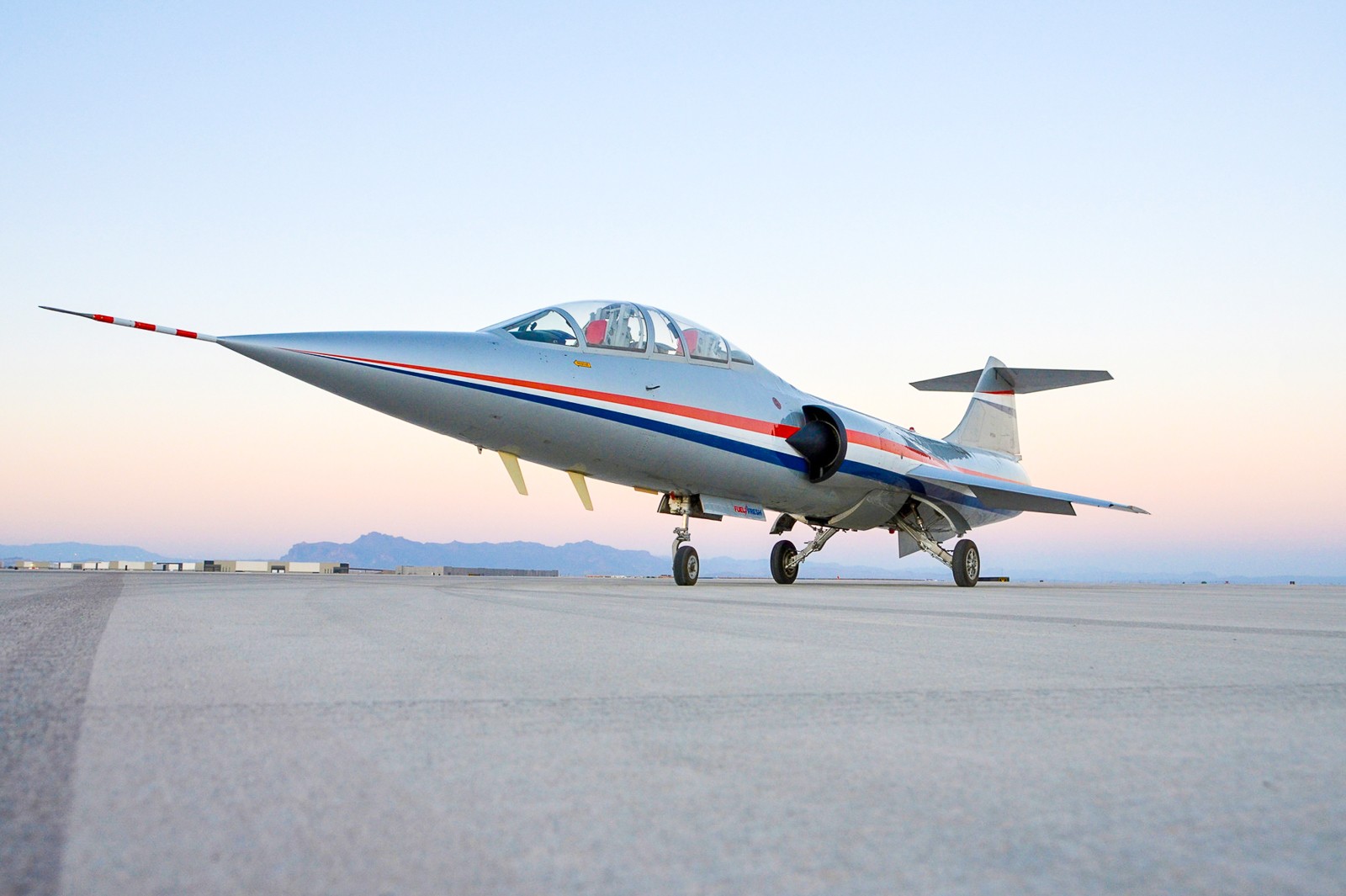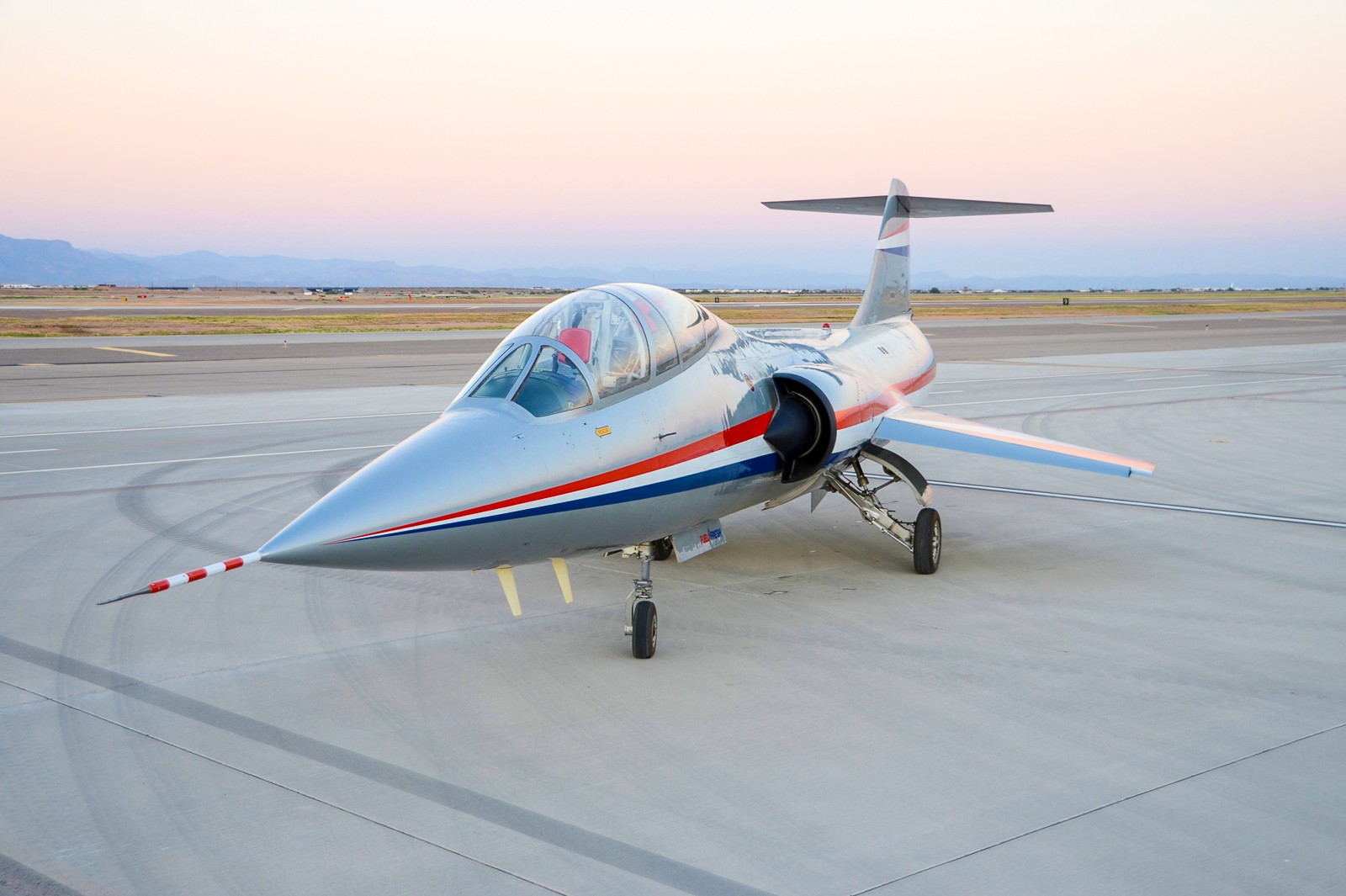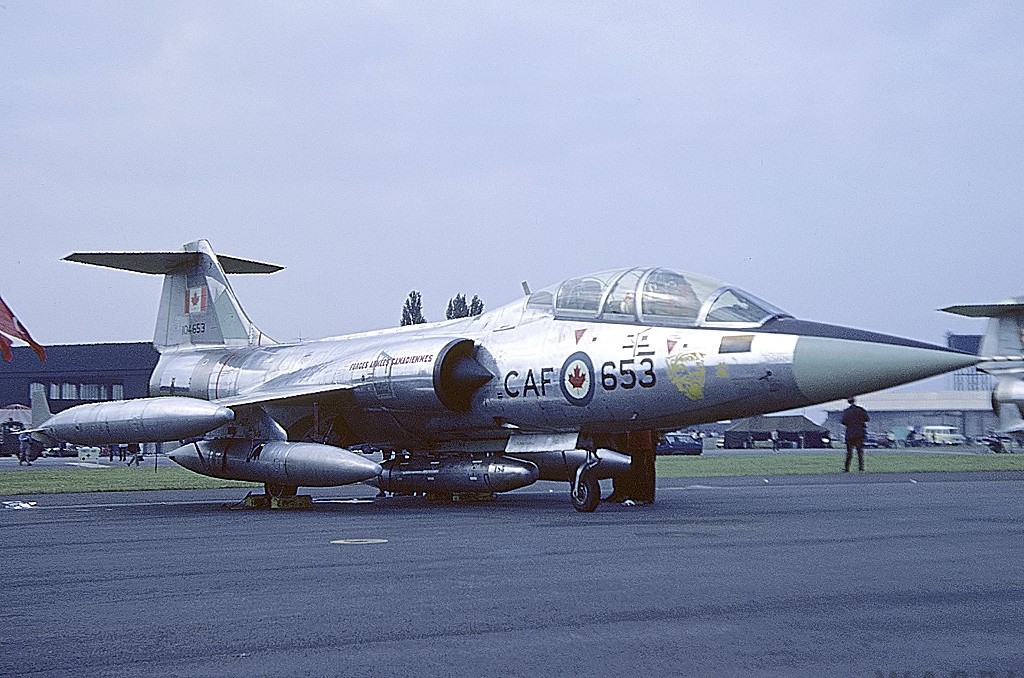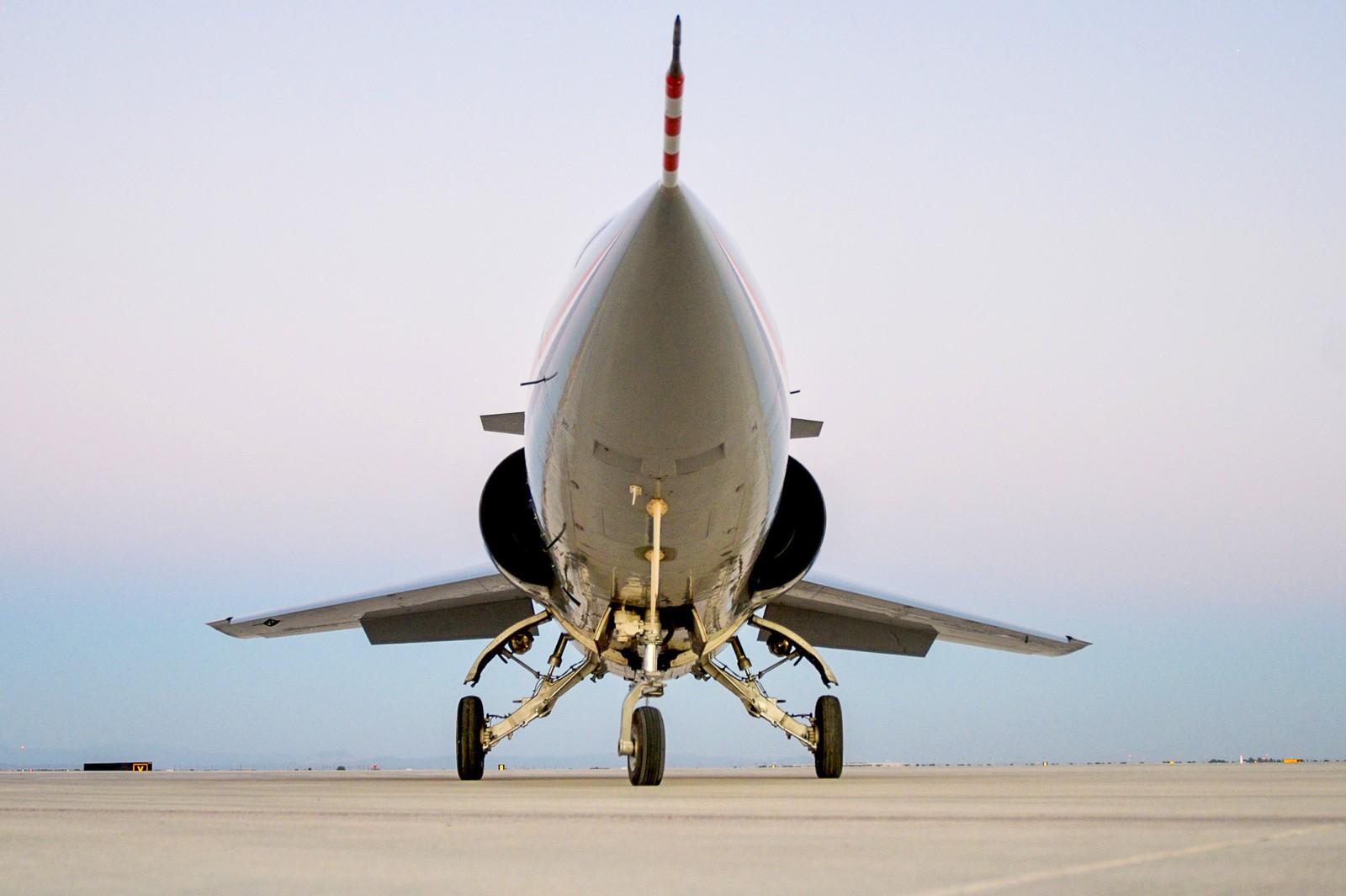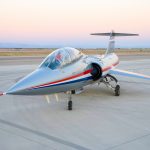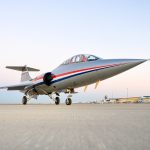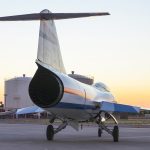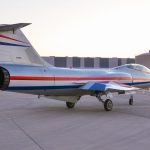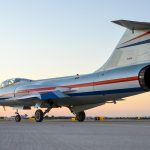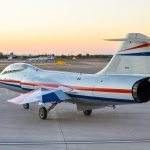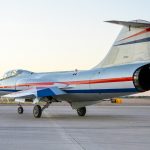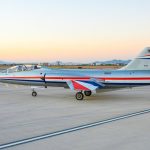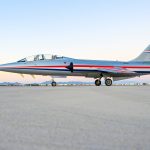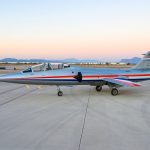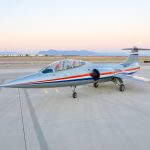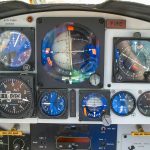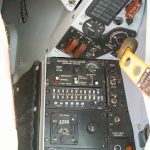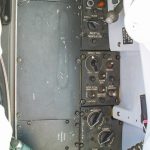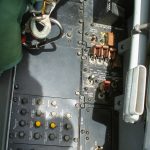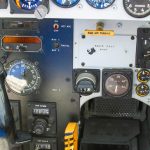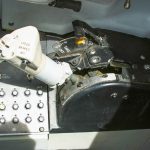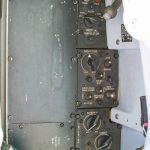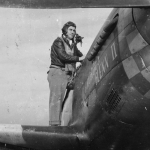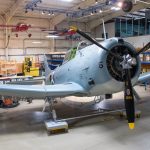Of all the supersonic interceptors which emerged during the 1950s, it is doubtful that any are as charismatic nor more futuristic-looking than the iconic Lockheed F-104 Starfighter. It is easily one of the most elegant aircraft ever designed, and still looks wickedly fast – even today – when just sitting on the ground. With the production run continuing into the late 1970s, the type enjoyed significant success on the export market too, even if it lingered only briefly as a front-line fighter in domestic air arms. The Starfighter is beloved across the vintage aviation community, so much so that when an flyable example comes on the market, there is a collective inhalation of breath in the hope that someone’s bank balance (or lottery ticket!) might make ownership and regular operation of such a magnificent beast an actual reality. Well, such a moment has arisen again, with the recent news that an immaculate-looking CF-104D is on the market via Platinum Fighter Sales.
Lockheed built this specific aircraft at their factory in Palmdale, California during 1961. She was the third of 38 such two-seat trainer variants which Lockheed delivered to the Royal Canadian Air Force (RCAF), who assigned her the serial number 12633. The RCAF trained their initial cadre of Starfighter pilots in this and a handful of other such variants at Palmdale before formally accepting the airframe in March, 1962 and assigning it to No.6 (Saint/R) Operational Training Unit at RCAF Station Cold Lake, which sits about halfway up Alberta’s eastern border with the neighboring province of Saskatchewan. Here the aircraft took part in pilot training and flight test duties. When the RCAF lost its independence with the merger of Canada’s military branches into the Canadian Armed Forces (CAF) in May, 1970, the remaining aircraft within the air arm underwent serial number changes; 12633 becoming 104633.
Three years later, Canada down-sized their Starfighter fleet, selling 18 their single-seaters and four dual control CF-104Ds to Norway to supplement that nation’s existing Starfighter fleet. The Norwegians assigned the airframe a new serial number on July 21st, 1973, truncating her Canadian designation simply to 4633. The aircraft became operational again in September, 1973, joining No.334 Squadron of the Royal Norwegian Air Force (RNoAF) at their base in Bodø. Here the CF-104 continued to train Starfighter pilots until its formal retirement on December 9th, 1982. The aircraft then went into storage at Sola, but she didn’t linger there long. In 1984, Bruce Goessling’s Combat Jet & Aerospace Museum (CJAM) of Chino, California arranged a trade for the airframe, with Lockheed C-60A Lodestar 42-55983 going to the Norwegian Armed Forces Aircraft Collection in Gardermoen in part exchange. CJAM commenced restoring the Starfighter to flying condition in Chino, placing her on the civil register as N104JR. In 1987, Jim Robinson’s Combat Jets Flying Museum of Houston, Texas acquired the project, but continued funding the restoration out in California. They successfully completed the restoration, with the first flight taking place on November 11th, 1987 in Mojave, California, with NASA’s then-current Starfighter pilot, Ed Schneider at the controls.
The airframe changed hands again in May, 1992, with the Experimental Aircraft Association (EAA) taking ownership. The aircraft made several flights during the EAA Convention in Oshkosh, Wisconsin that year. Fuel Fresh Inc. then acquired the aircraft in April, 1996, flying the two-seat fighter to her new home at Williams Gateway Airport in Mesa, Arizona, where the aircraft currently resides, albeit re-registered as N104 since August, 1999. While the aircraft reportedly last flew in 2008, she has been maintained in flyable storage ever since. According to the owners, the N104 has roughly 2,500 hours on the clock, with just 200 of these having been made during the past 22 years. The engine is reportedly about half way through its theoretically available hours since its last overhaul.
According to Platinum Fighter Sales, the aircraft’s current FAA registration lists the airframe in the Experimental Exhibition category, but they note that N104 has “pre-moratorium” guidelines, which mean it is allowed ‘on condition’ maintenance (yearly inspection under part 43 sub D) which is impossible to obtain today – thus making this airframe with its paperwork that much more desirable.
Fuel Fresh Inc has apparently accumulated a substantial spare parts cache during their ownership of the Starfighter. According to Platinum Fighter Sales this inventory includes the following key items (among many others):
- 2 spare J-79 engines
- 4+ spare afterburners; 1 new nozzle assembly
- Roughly 150 main gear tires
- Two dozen or so nose gear tires
- aileron, flap, rudder, horizontal actuators
- ailerons, flaps
- canopy and windscreen glass, in frames; other glass
- brakes, new assemblies
- air condition units, new overhaul
- Main Landing Gear shock struts
- 3 axis damper amplifiers (several)
- starters, generators
- spare drag chutes, cockpit chutes
- boundary layer control valves (many)
- wingtip fuel tanks (a few)
- volumes and volumes of maintenance manuals
- spare set tip charges
- Many other parts of all descriptions (barn & hangar full)
Given this amazing array of spares and a beautifully maintained airframe, here’s hoping that someone acquires the package for displaying on the air show circuit. It won’t be an inexpensive venture …. but it will be an exquisite adventure!







